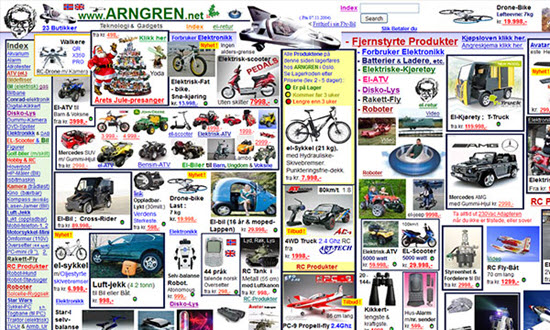By “clunky” I mean a website of which you can say some or all of the following:
- Doesn’t look smooth.
- Not mobile-responsive.
- Built on an old or less-common CMS, or is hand-coded.
- Doesn’t have an SSL certificate.
- Has some cruft, like pages with overlapping content, messy URLs, wordy title tags, etc.
At least in my experience, those sites often rank well. Surprisingly well, and more often than you’d think. When sniffing out a client’s local market and figuring out who’s up to what, naturally I’ll take a quick look at who’s #1 (and 2 and 3). Half the time that business’s site is beautiful and seems to check all the boxes, perhaps because of a recent redesign. But the other 50% of the sites are clunky.
How could that be? Aren’t the Maps and organic rankings so competitive these days that even slight edges matter? Why might a clunky site rank well in the local results? A few possible explanations:
1. In-depth content hasn’t been scrubbed out (“Hey, nobody reads anymore!”) in favor of an “elegant” and more-visual design.
2. The site may have fewer slow-loading graphics, whiz-bang special effects, bloated WordPress plugins (h/t Darren Shaw), and other things that make “slick” sites load slowly. Better to be the Badwater snail than the finicky tropical fish.
3. The SEO person hasn’t wiped out or butchered the title tags.
4. The SEO person hasn’t 301-redirected any or many pages, perhaps losing inbound links in the process.
5. Google has had more time to digest the content on the site, and to evaluate how searchers behave on it. It’s not changing every day, and is more of a known quantity.
6. Most other businesses have sites that are clunky, too, and most of the few who have slick-n’-modern sites probably think that’s all they need to rank well.
7. The business owner doesn’t spend all his or her time on the site, and puts a little effort into other things that matter – like earning links, rustling up reviews, and working up enough recognition that people search for the business by name.
I’m not saying you should try to make your site clunky, or that you should never put work into it or reinvent it. There’s a time to take it to the barber and the tailor, and there’s a time to take it behind the barn.
All I’m saying is that to rank well in Maps and in the localized organic results (1) your site doesn’t need to be perfect, (2) a redesign may not make it better, (3) the off-site work matters at least as much, and (4) tweaking your site shouldn’t be your nervous twitch when you want to improve your rankings. Don’t be afraid of a little crust.
—
How well does your clunky site – or redesigned site – do in the local results?
Any first-hand experience that aligns or conflicts with what I’ve described?
Any war stories?
Leave a comment!





